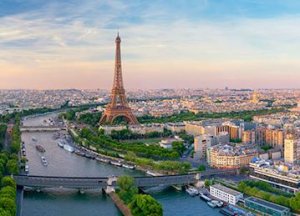The Palace of Versailles

The Palace of Versailles was the principal royal residence of France from 1682, under Louis XIV, until the start of the French Revolution in 1789. it is now the home of the French President.
My ex-wife and I moved to France in 1989, six months after they diagnosed my wife with Multiple Sclerosis. I believe we would have stayed in England but the locals were unfriendly and unpleasant to Lucille. In their opinion, it was all her fault about Apartheid. She got very upset and was not happy to stay there. So once again we were on the move, we decided that we would try France. We settled in a little village in Brittany. Not too far from the island of Mont Saint Michél
I got a job in Brittany working for a Scotsman where he taught me how to build and maintain golf courses. Duncan is a great guy and very knowledgeable. I learnt a great deal from Duncan and because of that, I was in a position to get my next job in Greece.
My ex-wife loved France because the French people treated her the complete opposite of how the English treated her. The locals-only accepted me because my ex-wife is a South African. It dates back to the 100-year war between the French and the English.
The Hundred Years War of (1337–1453) was a series of conflicts fought between England and France. The war was over the succession to the French throne. It lasted 116 years and saw many major battles from the Battle of Crécy in 1346 to the Battle of Agincourt in 1415. This was a major English victory over the French. The Battle of Agincourt, (October 25, 1415), decisive battle in the Hundred Years’ War (1337–1453) that resulted in the victory of the English over the French. The English army, led by King Henry V, famously achieved victory in spite of the numerical superiority of its opponent. The battle repeated other English successes in the Hundred Years’ War, such as the Battle of Crécy (1346) and the Battle of Poitiers (1356), and made possible England’s subsequent conquest of Normandy and the Treaty of Troyes (1420), which named Henry V heir to the French Crown.
The Hundred Years’ War was a discontinuous conflict between England and France that spanned two centuries. At issue was the question of the legitimate succession to the French crown as well as the ownership of several French territories. The struggle began in 1337 when King Edward III of England claimed the title “King of France” over Philip VI and invaded Flanders. It continued as a series of battles, sieges, and disputes throughout the 14th century, with both the French and the English variously taking advantage. When Henry V acceded to the English throne in 1413, there had been a long hiatus in the fighting. A truce had been formally declared in 1396 that was meant to last 28 years, sealed by the marriage of the French king Charles VI’s daughter to King Richard II of England. However, a need to reassert his authority at home (as well as his own ambition and a sense of justice) led Henry V to renew English claims in France. England had been fraught with political discord since Henry IV of the house of Lancaster (father of Henry V) had usurped the throne from Richard II in 1399. Since then there had been tension between the nobility and the royal house, widespread lawlessness throughout the kingdom, and several attempts on Henry V’s life. The situation in England, coupled with the fact that France was weakened by its own political crisis—the insanity of Charles VI had resulted in a fight for power among the nobility—made it an ideal moment for Henry to press his claims.
It seems at times, they are still fighting this war. Because there is absolutely no love lost between the French and the English.
Our quality of life was so much better than living in England, and the cost of living was a lot less. We made some very good friends and enjoyed living in the country. However, I would not want to live in a major city, but that goes for any country we live in. There are many interesting buildings to see, the French Châteaux’s are magnificent and the food anywhere in France is fantastic.
France is a great country and Brittany is a nice region to live in, just as long as you are not English. Most things work in France and if you can live with the bureaucracy it is a great country. However, as an Englishman, I would never live there again
The Seine is a 777-kilometre-long river and an important commercial waterway within the Paris Basin. Which is in the north of France. It rises at Source-Seine, 30 kilometres northwest of Dijon in northeastern France. That is in the Langres plateau, flowing through Paris and into the English Channel at Le Havre.
The Château de Chambord in Chambord, Loir-et-Cher, France. Is one of the most recognisable châteaux in the world. Because of its very distinctive French Renaissance architecture which also blends traditional French medieval forms with classical Renaissance structures.

It would not be France without an image of The Eiffel Tower
It still takes a lot to beat the view of The Mont Saint Michél.


Pleasure craft on the River Seine
The Château de Chambord in Chambord, Loir-et-Cher, France, is one of the most recognisable châteaux in the world

